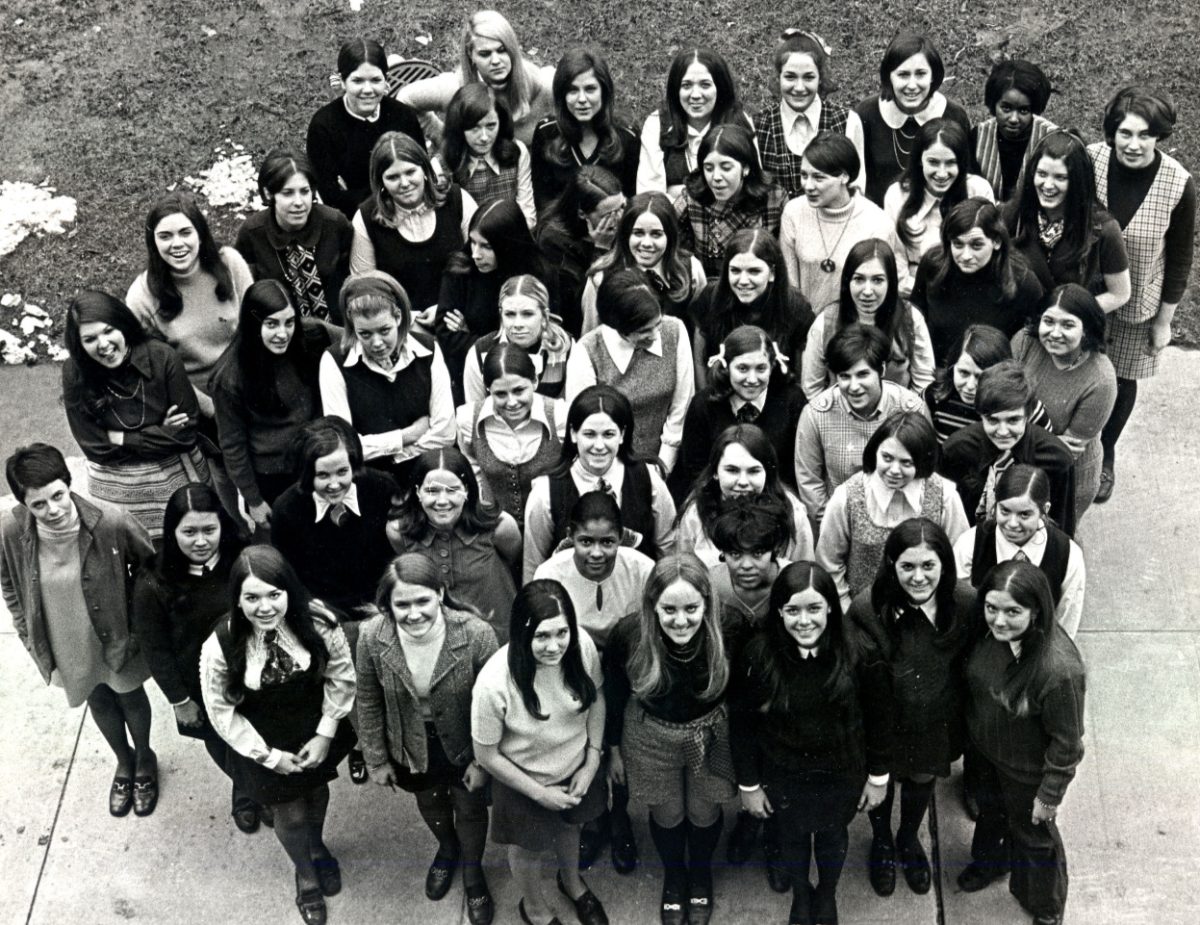Through the work of The Carroll News in the past 100 years, both mundane and historic events in school history have been preserved. From covering serious topics, such as the school community in times of war, to coverage of more light-hearted topics, such as different musicians who have come to campus, TCN has been a platform that has documented the ways in which the community has changed over time.
One historic change that is documented within past editions of TCN is the shift from an all-male to a coeducational university. The first official year for this shift was 1968, with the first class containing women who live on campus graduating in 1973. This first class contained 75 women, and by the second year of enrollment, 150 women occupied their own floor in Murphy Hall.
The start of this shift was documented in an 1966 edition of The Carroll News, with an article titled “Coeducation is proposed: Union bill requests arts and sciences to admit women students.” In this bill, co-author students Daniel Kush and Judy Zaruba argued that many women already attend classes in this college, so the policy must change to get rid of vague language that excludes women.
During the time of transition, The Carroll News provided a space for women to share their reactions to their changing status on campus. In a 1967 edition titled “Coeds give opinions on Carroll man, social life”, one woman, Nancy Grewatsch, shared, “I’ve received wonderful treatment. Everyone’s gone more than out of their way.”
Another student, Georgianne Ivanisevic, shared a different perspective: “Girls are really left out of campus social life.”
Finally, in a December 1968 edition, the official shift was announced. An article titled “Co-eds to dorm on campus” was published, announcing that women would be able to dorm on campus in the upcoming fall.
Reflecting back on those years, one woman who graduated from the second coed class, Linda Meglin ’74, shared her memories of JCU during this time.
“The board knew that there was a surge of women attending college, and to keep [JCU] healthy and viable, letting the women in was a good idea,” shared Meglin. “Someone had good foresight to know that it was a changing time.”
Additionally she remembers that there were some mixed reactions to women’s attendance, with push back from the Jesuits rather than the students themselves.
“You had to be a warrior in a lot of ways,” shared Meglin.
These mixed reactions continued as women’s presence increased on campus. A 1980 article of The Carroll News documented a student-led protest over the possibility of Bernet Hall’s second floor being used exclusively by women. Students created “save Bernet” signs to protest, and some Jesuits joined as well.
By the end of the 1980s, a “Looking Back on 20 Years of Co-education” piece was published to reflect on the state of JCU 20 years post-transition. By this point in 1988, as documented, the school’s enrollment was nearly 50-50, with slightly more women attending JCU. These years brought times of hardship, especially in the classroom, but also times for celebration, such as when the first women Student Union president, Tracy Coyne, was elected in 1978.
57 years later and the school is still finding ways to include women in a university that has its roots as an all-male school. This is prominently seen in JCU sports, with the addition of a women’s wrestling team being added just last year and talk of a women’s field hockey team to join the school’s varsity athletic program next year.
As a closing thought, Meglin shared some inspiration for JCU women. “You can do anything.”



